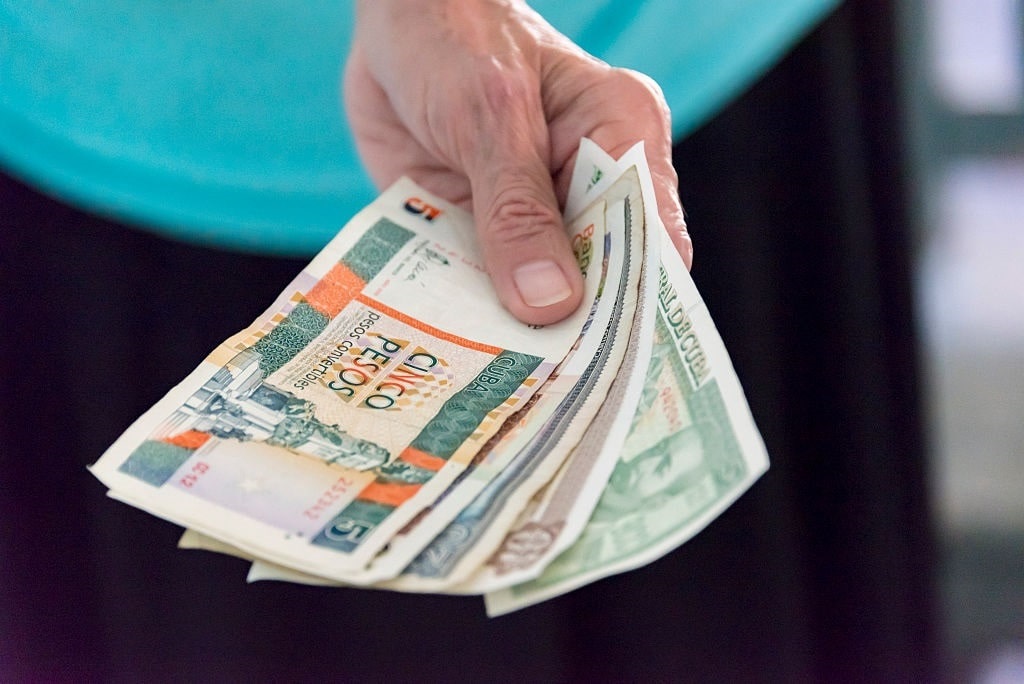A socialist paradise is once again metastasizing into a hellish landscape. Cuba – the left’s on-again, off-again paragon of socialism – is enduring a long list of setbacks on the road to becoming a Marxist utopia. Many have heard about the island nation’s routine food shortages and power outages. But what about cash deficiencies? In another exhibit on late-stage leftism, Havana is grappling with a shortage of pesos, proving to be another hurdle for 11 million individuals who cannot catch a break navigating the wonders of this ideology.
Another Crisis in Cuba
Cuba is engulfed in one of the nation’s worst economic crises. The struggles gripping the country have resulted in many Cubans unable to access cash, leading to long lines outside banks straight out of a Frank Capra film. When some depositors are welcomed by tellers or reach ATMs, clients are informed the bank has run out of money.
 But how can a nation that has seen its money supply grow at an annual rate of 86% over the last few years run out of cash? During hyperinflation scenarios, famous images show people pushing wheelbarrows full of money. Economists argue that the problem is a toxic mix of ballooning government deficits, the ban on large-denomination banknotes, the creation of a digital currency, rampant price inflation, and businesses and consumers not depositing cash in the banking system.
But how can a nation that has seen its money supply grow at an annual rate of 86% over the last few years run out of cash? During hyperinflation scenarios, famous images show people pushing wheelbarrows full of money. Economists argue that the problem is a toxic mix of ballooning government deficits, the ban on large-denomination banknotes, the creation of a digital currency, rampant price inflation, and businesses and consumers not depositing cash in the banking system.
Let’s break it down one by one.
The government has continually posted budget deficits. While they have eased since the pandemic, the shortfall represents approximately 11% of the GDP. To fund these annual imbalances, officials have turned on the money printer and facilitated the peso’s erosion. Everyone routinely waits for even more government intervention whenever the peso takes a nosedive in Forex markets.
Despite reports that the government would issue banknotes greater than 1,000 pesos, leaders have repeatedly denied this would happen. Instead, policymakers say they will work with the notes presently in circulation. They cannot be blamed since Cuba likely wants to refrain from appearing in the same condition as Zimbabwe, where officials had to print the now-defunct 100-trillion Zimbabwe-Dollar banknote.
Indeed, peso hoarding is ubiquitous throughout Cuba. The latest numbers suggest that 70% of the nation’s money is inside residents’ wallets, up from 50% in 2018. Experts assert this is unsurprising because the public does not consider the financial ecosystem safe, sound, or liquid. Additionally, households will hold on to their pesos and swap them for other currencies, especially the US dollar, in the informal foreign exchange market. Plus, many have become skeptical of policy intervention schemes. In 2013, the central bank prohibited state and private businesses from using ATMs and limited cash transactions as part of efforts to fight inflation.
What about the war on cash? Cuba’s cash shortage woes are not exactly new. They occur relatively frequently and were one of the reasons behind the island’s recent push for a cashless society. In August 2023, Cuba announced new efforts to usher in a society without physical money. One of these was the daily cap (5,000 pesos) on cash withdrawals for businesses. The idea was to encourage more electronic transactions, whether online payments or bank cards. The public wasn’t enthralled with the concept amid unreliable internet connections, spotty electricity, prevalent fuel shortages, and companies accepting only cash for fear of having their money confiscated by the state.
A Cautionary Tale for America?
Is Cuba’s crisis a prediction for America’s future? Not anytime soon.
Public trust in the US government is at near historic lows. According to Gallup’s National Election Study, fewer than two-in-ten Americans said they trust Washington to do what is right. Twenty-five percent of Democrats said they trust the federal government compared to 8% of Republicans. This should matter to public policymakers, especially on an issue like a central bank digital currency that could manufacture a tsunami of threats to personal freedom and economic liberty. Studies on the issue have been limited, but the available data suggest the American people are primarily opposed to the idea of a digital dollar.
As for the US dollar, it will not transform into the Cuban peso overnight. One of the reasons Washington can issue trillions of dollars in new debt, ship inflation to the rest of the world, grow the economy, and pay its bills is because of demand for the greenback. Despite the evisceration of its purchasing power and accelerated de-dollarization, the world still desires dollars. The buck has been one of the top-performing currencies since COVID, outpacing the British pound, the euro, the Canadian dollar, and the Japanese yen.
A lot could be said about why there is an appetite for the US dollar. But as long as the international community wants to hold the global reserve currency, the king dollar will rule from the throne, and the world’s largest economy will continue to sit on top of the mountain for many years to come, avoiding cash, food, and fuel shortages.




